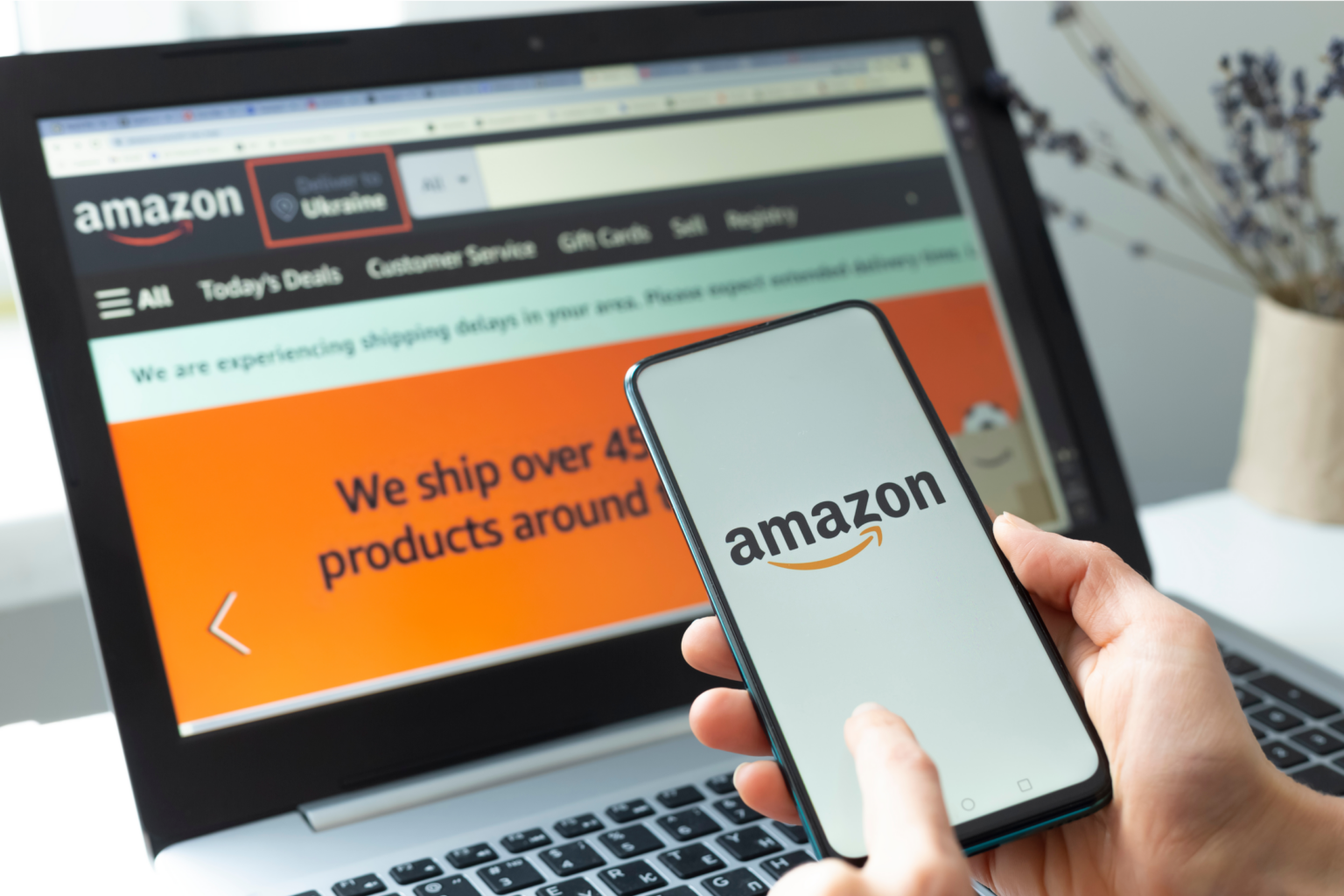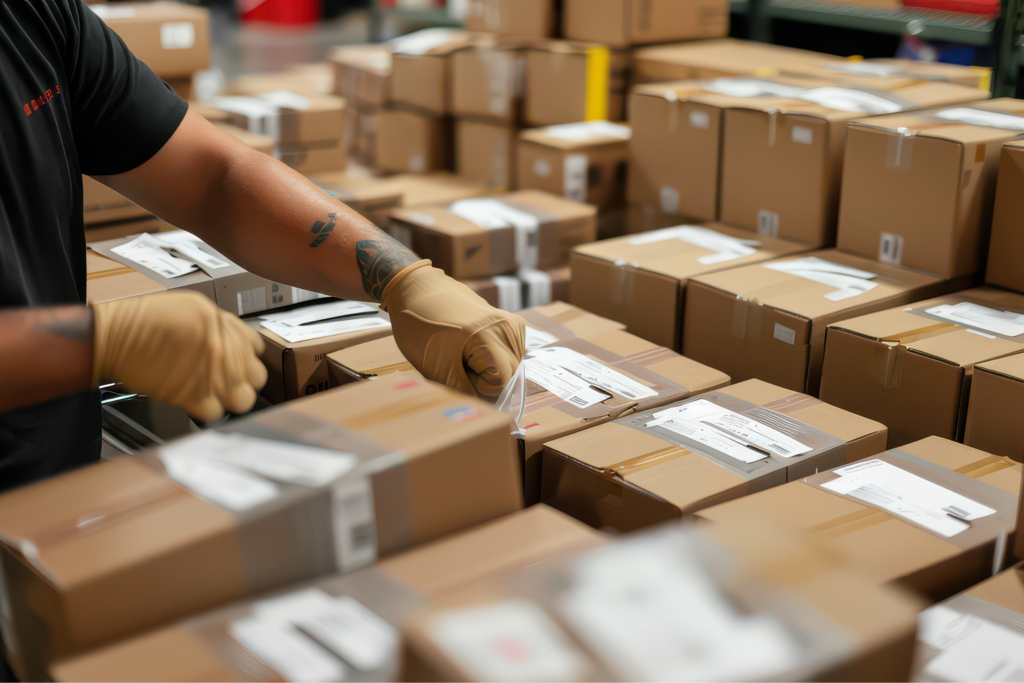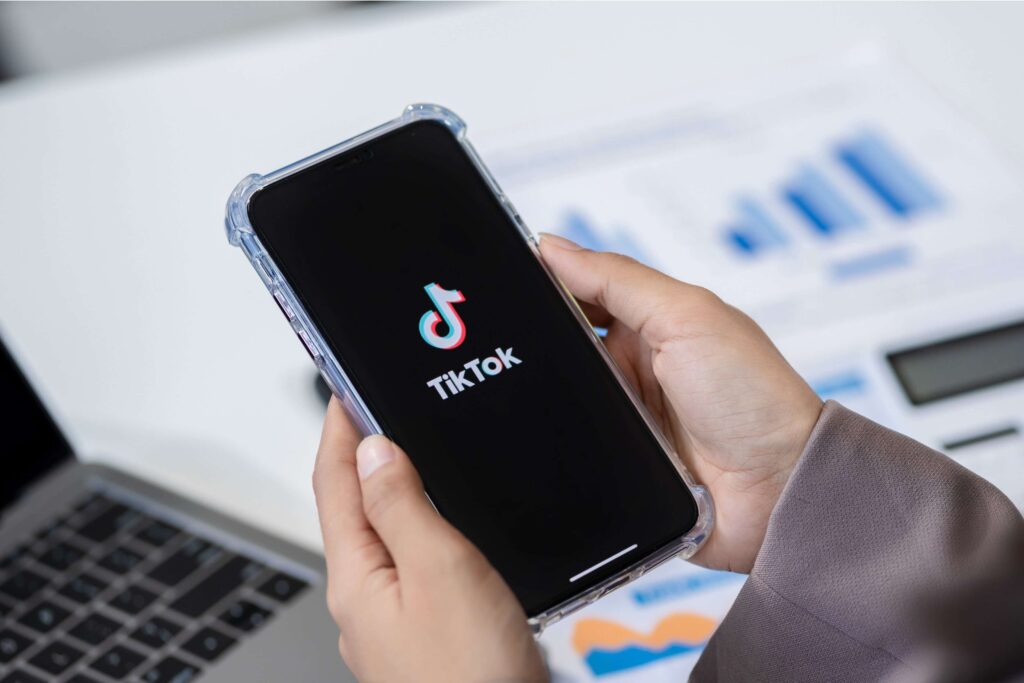Sell custom products with Printify
Amazon is the world’s largest online retailer and a goldmine of money for your eCommerce business.
Learning how to find products to sell on Amazon is key to attracting more customers and maximizing profitability. But with millions of items already on the platform, how do you find your next bestseller
Stand out among other Amazon sellers with our tips and tools for successfully launching your Amazon business – from understanding the marketplace to sourcing products.
Key takeaways
- Find products with high demand and low competition. Pick a niche with enough buyer interest that isn’t too saturated with other Amazon stores.
- Consider factors like size, weight, profitability, demand, and seasonality. Lighter products are easier to ship, while seasonal trends can impact sales.
- Utilize tools like Amazon Best Sellers, Google Trends, and third-party software for product research.
- Explore different sourcing methods such as Print on Demand, retail arbitrage, dropshipping, wholesale, direct sourcing, and private labeling.
- Research products and profitability before you invest. Factor in manufacturing, shipping, and Amazon fees to make sure you have a solid profit margin.
Understand Amazon’s marketplace
Knowing how Amazon’s marketplace works is the best way to make informed decisions about product selection, target markets, and fulfillment strategies.
Here’s where to begin:
- Categories. Amazon organizes products into broad categories like Electronics, Clothing, and Home & Kitchen. Researching top-selling products within these categories provides valuable insights into trending products and consumer behavior, helping you identify potentially profitable products.
- Sub-categories. These include more specific product types. For example, cameras fall under the Electronics category. Exploring niche sub-categories with lower competition is a strategic move for new sellers to establish a foothold more easily.
- Brands. Numerous established brands sell directly on Amazon alongside independent sellers. Understanding existing brand dynamics within a category impacts how you position your own products for profitability.
- Third-party sellers. Sell new, used, or private-label products on Amazon as an independent seller. Understand Amazon’s policies, fees, and fulfillment options – Fulfillment by Amazon (FBA) and Fulfillment by Merchant (FBM) – to calculate profitability and set up your Amazon store effectively.
Explore the best ways to make money on Amazon on our blog.
Set criteria for choosing the right product

But how do you find profitable products to sell on Amazon?
Consider the following product criteria:
Demand
Use resources like the Amazon Best Sellers page and Google Trends to explore keyword searches and see the demand for specific products or categories.
Best-selling products tend to sell faster and generate steady revenue. You’ll need regular and reliable sourcing to keep up with demand.
Competition
Evaluate what other sellers offer within the same product category you’re targeting. High competition might mean lower profits unless you have a unique selling proposition (USP).
Identifying low-competition products is critical. Look for categories with sufficient demand but moderate saturation where you can establish your brand and compete effectively.
To offer a better product selection than your competitors, analyze reviews and identify where you can add unique value. Check their pricing to determine your own competitive price point.
Size and weight
Carefully weigh profit margins against additional size and weight costs. Smaller and lighter products are cheaper to store, ship, and fulfill – perfect for new Amazon sellers.
While larger and heavier products like furniture might offer higher profits per unit sold, they also come with increased shipping and storage costs. They also may require advanced fulfillment solutions.
Seasonality
Seasonality affects monthly sales and customer reach, with items like holiday decorations or summer apparel peaking at specific times. While seasonal products can bring high returns, they require careful inventory planning to meet demand and avoid excess stock during off-seasons.
Profitability
Profitability is key when selecting products for selling online. Calculate all costs to guarantee good margins, including manufacturing, shipping, Amazon fees, marketing, and other expenses.
Aim for profit margins of at least 25-30% to account for unexpected expenses. A competitive price that covers product costs and leaves you with a healthy profit margin is key to achieving long-term success in online selling.
Tools like the FBA revenue calculator on Amazon Seller Central help estimate profitability.
Legal considerations
Before investing in a product idea, understand the legal aspects to protect your business and set your Amazon store up for success.
Certain product categories require certifications, while others might even be restricted or prohibited on the Amazon marketplace. Familiarize yourself with Amazon’s guidelines and all safety regulations relevant to your chosen product category.Respecting copyrights and trademarks is equally important. Verify that you have the legal right to sell a product and avoid infringement. Consider consulting experts like intellectual property lawyers to make sure your product ideas are legally sound.
Get more tips on what to sell on Amazon and discover product ideas in our blog.
Tools for product research

Use the right tools to find profitable products to sell on Amazon. Here are some essential resources for product research.
The Amazon Best Sellers list
Amazon’s Best Sellers list is where you’ll see what customers are buying right now. It updates hourly, showcasing top-selling products across diverse categories.
Browse the Best Sellers list by category to analyze sales and reviews and identify potential niches. This approach helps you find high-demand products while simultaneously understanding customer sentiment.
Amazon’s own tools
Find good products to sell on Amazon by leveraging the platform’s tools designed to empower your selling strategy.
The Amazon Seller App provides real-time data on your sales performance, inventory levels, and customer feedback.
Amazon Brand Analytics delves deeper, offering insights into customer behavior and competitive analysis. The Product Opportunity Explorer unlocks valuable data on search volume, sales history, competition levels, and average selling price for different product categories.
You’ll need to set up an Amazon Seller Account before you start selling or creating a product listing.
Third-party tools
While free resources provide a solid foundation for curating product listings, numerous third-party solutions take your product research to the next level.
Other tools, like Jungle Scout, Helium 10, AMZScout, and Viral Launch, offer advanced features for in-depth keyword research, sales estimates, seller rank, and competitor analysis.
However, remember that these tools provide estimates, not guarantees. Always factor in sourcing or production costs for things like raw materials to determine if a product is truly worth selling.
Google Trends
This free tool helps you understand what people are searching for online, offering insights into evolving categories and product trends. Use Google Trends to compare search volumes for product ideas and align your offerings with rising customer interest.
Consider other free Google tools, such as the Keyword Planner tool on Google Ads, to research trending products and search queries.
Source your products

After deciding on a profitable product, choose where to source it from. Here are the most common methods.
Print on Demand
The print-on-demand (POD) business model lets you sell custom products without physical inventory.
All you have to do is apply your design to blank products and the POD companies handle the rest – printing, packaging, and shipping.
POD providers like Printify even handle customer support, freeing up your time to concentrate on marketing and sales.
This approach is particularly advantageous for new sellers for a few reasons:
- No upfront costs. A POD company only prints products after a customer orders. This lets you test different designs and product ideas while minimizing the financial risk of launching a new product.
- No unsold inventory. You don’t need to invest in large quantities of products upfront. Simply create a custom design, choose a product, and list it on your Amazon storefront to start making money.
- Simplified product sourcing. Companies like Printify offer a vast network of print partners worldwide, so you aren’t stuck with one supplier. Choose only the best products to curate a high-quality selection for your Amazon customers.
- Custom branding. Branded labels or custom packaging inserts can help you stand out from competitors and make your product more exclusive.
Partner with Printify and create your Print on Demand business on Amazon
Retail arbitrage
Retail arbitrage involves purchasing discounted products from retail stores and listing them on your Amazon storefront at a higher price.
This approach can be labor-intensive but is viable if you have an eye for spotting gems, a good understanding of profitable items, and time to search for the best bargains.
With the right strategy, retail arbitrage can be a profitable venture, leveraging scarce supply and a price gap between retail and online marketplaces.
Dropshipping
Dropshipping is another way to sell products without inventory. The product is shipped directly from the supplier, who handles storage, shipping, and fulfillment.
This model significantly reduces upfront costs and inventory risk, making it an attractive option for new sellers who aren’t worried about custom branding.
The downside is that you have limited control over product quality and shipping times. Work with reliable suppliers to maintain customer satisfaction and a good reputation.
Amazon also has strict dropshipping policies, which require you to be the seller of record and prohibit orders from showing that a third party fulfills them.
Wholesale
Wholesale involves purchasing products in bulk directly from manufacturers or distributors at a discounted price.
This method requires a larger upfront investment and effective inventory management, making it suitable for established businesses with consistent sales.
Buying in bulk lowers unit costs and gives you full control over your stock.
Direct sourcing
Source products directly from the manufacturer and have full control over product quality and branding.
Direct sourcing enhances the potential for higher profits but requires significant investment, upfront work, and management. That includes managing production, quality control, and international shipping logistics.
Tariffs and duties are also a consideration when working with overseas manufacturers.
White or private labeling
White labeling involves branding generic products with your own logo, while private labeling involves customizing products with unique features. Both methods involve partnering with a manufacturer to create a branded product.
They offer greater control over brand identity and product features than options like dropshipping and allow for higher profits. However, both require investment in design, packing, and marketing efforts.
Tips and strategies for selling on Amazon without inventory.
FAQ
Source products from manufacturers, wholesalers, and retailers, or even create your own products through methods like Print on Demand or private labeling.
Each method has its own advantages and challenges, so choose one that aligns with your eCommerce business goals and budget:
- For beginners. Consider Print on Demand or dropshipping for lower upfront costs.
- For established businesses. Wholesale or direct sourcing offers higher profit margins but with a larger upfront investment.
- For brand building. White or private labeling allows for complete brand control, or try POD with custom branding solutions.
Analyze niche markets or emerging sales trends to find unique items and product ideas. Many free tools like Google Trends and Keyword Planner, social media platforms, and market research software will help identify gaps and trending products in the market.
For offline solutions, attending trade shows and networking with suppliers and local artists provide insights into new and innovative products.
There’s no magic formula for easy product ideas. However, focus on items with the following characteristics when you conduct product research for maximum profitability:
- Consistent product demand
- Low competition
- Smaller size and weight
- An upward trend in popularity
Conclusion
Finding products to sell on Amazon requires a strategic approach. We’ve covered the key criteria to consider, including demand, competition, and profitability.
Leverage research tools like the Amazon Best Sellers List and third-party services to help you identify winning product opportunities.
The easiest way to get started as an Amazon seller is sourcing products using Print on Demand for low upfront costs, no inventory, and custom branding solutions.
Success on Amazon requires ongoing market research and innovation. Follow these steps and adapt to market needs to build a thriving eCommerce business on this leading online marketplace.












